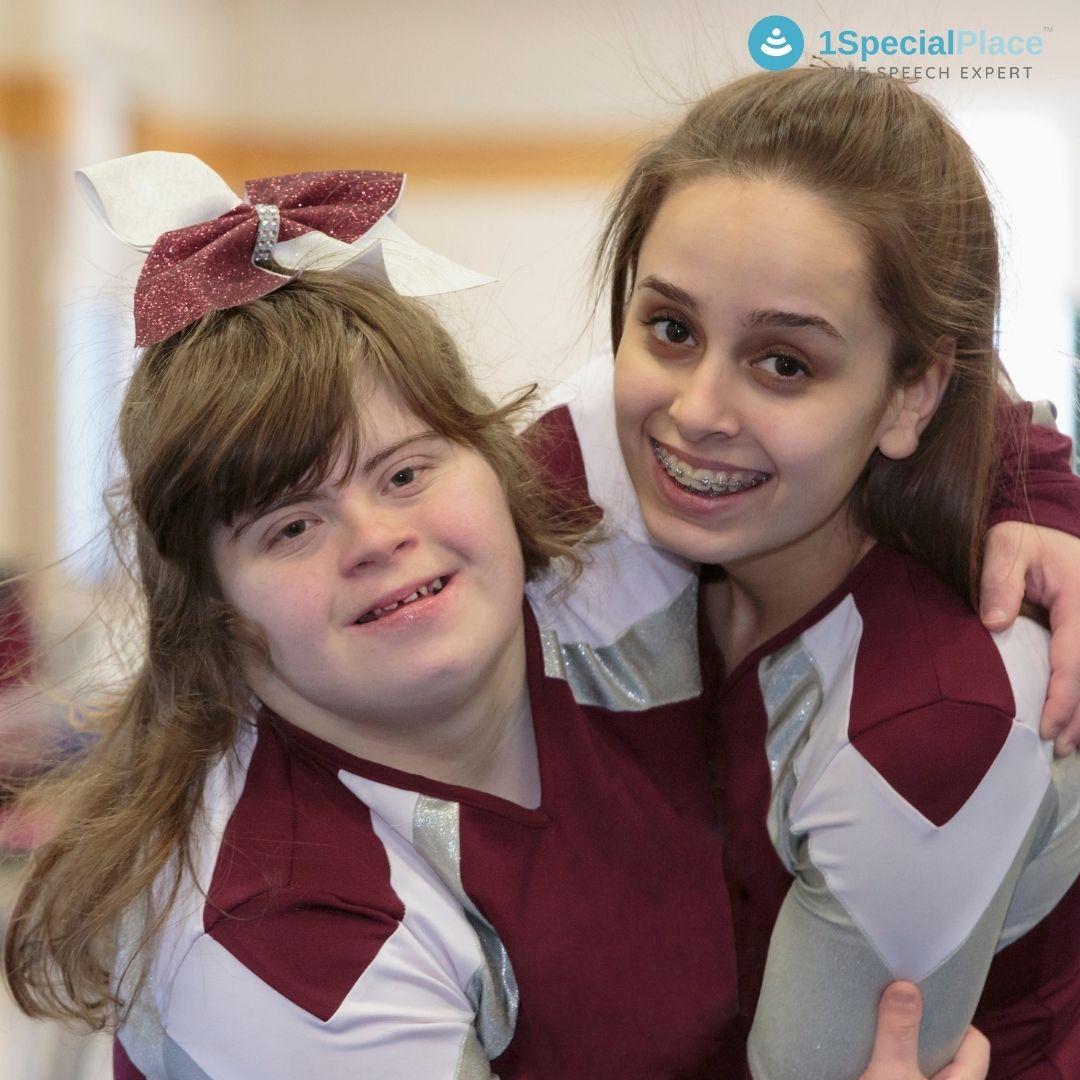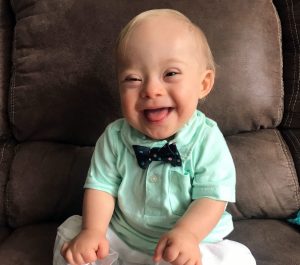
Speech Stimulation in Infants and Toddlers with Down Syndrome : A Guide for Parents
Speech Stimulation in Infants and Toddlers with Down Syndrome : A Guide for Parents
Speech Stimulation in Infants, Down Syndrome is a developmental difficulty due to a chromosomal error (or a problem with genes). All children with Down Syndrome have some degree of learning disability and develop skills at a slower rate than other children.
Children with Down syndrome typically experience a considerable delay when learning to talk, though they often comprehend more than they can express. It’s important to help your child with Down syndrome to revise speech errors at any age, but the toddler years offer a most impressionable period in your child’s speech and language development, as they are just beginning to say words and phrases.
They may also experience feeding, swallowing, and speech Interrupted due to anatomical and physiological differences in their mouth area. These differences include a high arched palate, small upper jaw as well as low muscle tone in the tongue, and weak oral muscles. Children with Down Syndrome can experience a lot of oral motor difficulty which can cause speech and feeding problems. Despite these difficulties, children with Down syndrome are keen communicators but require some encouragement and training to help them do so in an effective manner. Speech Stimulation in Infants, Speech and language therapy is therefore recommended to help facilitate this desire to communicate and can be quite a beneficial form of therapy.
Following are some guidelines that can be followed in the early years:
- Encourage a good communication environment at home and ensure that parents understand the speech and language needs of their child, and how speech and language develops.
- Provide support for feeding and activities for oral-motor development.
- Encourage all communication skills, eye-contact, turn-taking, pointing, and joint-referencing by the end of the first year.
- Target auditory discrimination for speech sounds to improve auditory discrimination in the phonological loop.
- Target auditory discrimination for speech sounds in order to support the development of babble (typical babies tune their babble to the language they are hearing by 12 months – in other words, they are setting up the speech-motor skills for talking).
If you are parenting a toddler with Down syndrome, here are some fun speech therapy activities that will keep your child entertained as they learn to communicate both verbally and with visual clues.
Comment more and fewer questions
Toddlers with Down syndrome need more time to begin forming multi-word phrases than most of their peers. They will typically need to have a 100-word vocabulary before they start doing so. You can help your toddler transition from one-word to two-word phrases by using a technique involving imitation and expansion. You will first repeat a word your toddler says and expand on it by one word. For instance, if your child says “cup”, you can say “Cup red cup/teacup, etc.” Remember parents usually tend to ask more questions, for example, you might call his /her name and if you see holding a cup you might ask “ ____ what’s that in your hand” say it’s a cup, etc. But a better way to this scenario is that you have to comment more about what he is doing with the cup and you can describe the uses of it, its features, etc.
This will help the child to learn about it, he in turn will remember those words and add to his vocabulary, use them later when the situation is right.
Visual Learning
Visual learning generally comes easily for children with Down syndrome, but understanding and remembering verbal communication is more difficult. Help your toddler learn the names of everyday objects by using simple visual clues along with the words. When the phone rings, for instance, put your finger to your ear and say “phone”, or say “drink” while you pretend to drink. Likewise, whatever you do, give self-talk about what you are doing. This is the best way to introduce new vocabulary to him.
Self-talk is a language stimulation technique in which the parent, guardian, or educator describes their actions before or while performing them. Self-talk is more potent when the child is involved. The parallel talk also helps a lot. It is similar to self-talk, but it focuses on the child’s actions instead of the actions of the parent, guardian, or educator.
It is crucial to use pauses, eye contact, and body language when employing parallel talk to encourage the child to participate in the communication. One example of parallel talk would be, “It’s your snack time. You’re eating a banana. When you finish eating your banana, you will eat some orange slices next.”
Unity is strength

Choose an object to which you draw your child’s attention, such as a favourite toy or picture, and encourage them to look at the object as you talk about it. You can gradually increase the amount of time you describe an item as your child’s attention to it increases. This type of joint attention when both you and your child look and communicate about the same thing helps them to learn the language more quickly and improve their attention span.
Keep it focused and link them together
Gather several items around the house that are the same colour, such as a blue shirt, blue cap, and blue ball. Put them in a blue bag or painted blue box. If your toddler is at the one-word level, name the colour when you pull out an item. If they are at the two-word phrase level, say the colour and the name of the object.
Here are some of the activities that can be used to stimulate speech, language, play, and socialization skills:
Daily activities:
- Talk through everyday activities as they are happening, e.g. breakfast time, it’s time to eat, cereal or toast, butter the bread
- Nursery rhymes
-Children like the repetition of simple nursery rhyme and it encourages copying/imitating e.g.‘Baa baa black sheep’
-
Model noises that toys make e.g.:
Cars – brr brr
Cow – moo, moo
Train – choo choo
Dog – woof woof -
Bubbles
– Playing with bubbles allows you to repeat simple functional words such as “up”, “pop”, “gone”,
“more?” When the bubbles have gone ask your child “more ? -
Exploratory Play
– Allow your child to explore objects such as wet/dry, hard/soft e.g. fill a tray with pasta and allow your child to feel the textures
– Use cause and effect toys such as pop up toys, wind-up toys -
Messy play
– Finger painting, potato printing, use, play dough, putty, shaving foam
-
Pretend play
– Keep everyday objects, e.g. boxes, egg cartons, and encourage your child to play with them. For example, a box can be a car, a boat, or a hat. – Have a tea party with a teddy or doll and feed them using pretend food
– Do everyday actions with dollies and teddies: put them to sleep, feed them, etc. -
Turn-taking
– Play games such as building towers, taking turns to unload the shopping, rolling a ball
-
Eye Contact
– Play games such as peek-a-boo, rolling a ball, ready steady go games, blowing bubbles.
Remember to take your child’s lead, follow them in their play and give plenty of time for your child to talk, taking turns to speak. A speech and language therapist can help your child with Down syndrome and they work on pre-verbal skills such as eye-contact, turn-taking, and attention. The speech and language therapist will also work on early vocabulary and language concepts. They can help support the child’s verbal and non-verbal communication, as well as their language and cognitive development. Therapy may also include exercises to help strengthen muscle tone and coordination in the mouth area exercises to improve speech production, or strategies to support language development. Speech Stimulation in Infants .
For more ideas check out our other blogs
- Speech and Hearing Rehabilitation for Children with Cochlear Implant - September 4, 2021
- Stuttering Recovery and Relapse in Children: Parental Guide - August 12, 2021
- Myths About Stuttering : Explained - April 18, 2021






Leave a Comment
(0 Comments)